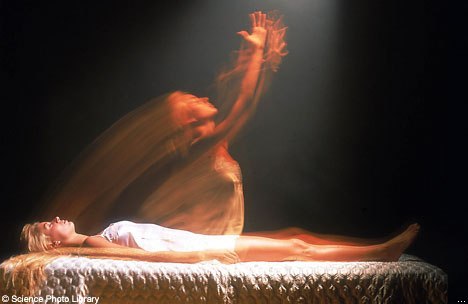|
By Aditya Nair
It’s a tale that seems as old as history. Those among us who have come very close to dying report extraordinarily vivid visions involving some combination of seeing the dead, passing through a tunnel, feeling dissociated from the body, and extreme emotional states among many other phenomena collectively referred to as near death experiences (NDE’s). These experiences tend to be relatively similar in nature from patient to patient in their general characteristics, and they are usually perceived with an extremely high degree of realism, leading many sufferers to describe them as life-defining experiences often tied to religious nirvana or enlightenment. A surprisingly large proportion of Americans report having had NDE’s- around 3%, a figure that represents 40-50% of all people who have come close to clinical death. Despite the supernatural element of most NDE’s, many neuroscientists believe that NDE’s are largely explainable by current neuroscience in corporeal terms. Rather than being evidence for an afterlife or supernatural forces, NDE’s are more likely to be a hyper-realistic delusion brought about by abnormal patterns of neural firings from a loss of blood flow to certain parts of the brain as the body goes into emergency mode in the minutes and seconds right before death. The first piece of evidence is the non-exclusivity of NDE’s to dying patients. It turns out that the conditions necessary for a NDE don’t necessarily involve imminent death, lending support to the notion that NDE’s are purely a result of abnormal brain chemistry. For example, one patient who lost consciousness due to low blood glucose levels reported experiencing an NDE upon waking up. In fact, a prospective study of NDE’s found that over half of NDE’s were experienced in non-imminently life threatening conditions. Furthermore, many of the “classic” characteristics of an NDE can be experimentally demonstrated in studies that have little to do with death. For example, one commonly reported component of a NDE is an out of body experience, or OBE, in which the patient feels as if he or she is “floating” outside of their own bodies. Not being unique to NDE’s, OBE’s are experienced by people even during perfect physical and psychological health, sometimes as a common side effect of deep sleep. Neuroscientist Olaf Blanke showed that stimulation of the right temporopareital junction could elicit a strong OBE, demonstrating that disruption of sensory integration in that area could bring about the feeling of an OBE. It’s very possible that, when faced with physiological stress, sensory integration in this area is similarly disrupted, which results in the perception of an OBE just like in an experimental setting. Many NDE patients also report that they travel through a characteristic “tunnel of light” during their NDE’s. However, this symptom too is well studied as a neurological phenomenon, usually in conjunction with lowered availability of blood in the retina. The sensation of passing through a tunnel of light is often reported in military airplane pilots, who are subjected to extremely strong forces that may drain blood from the head and eyes. The tunneling sensation is also often reported by glaucoma patients, who are victim to constricted blood vessels in the eye. Although there are several other key characteristics of NDE’s that are also explainable scientifically, I have chosen for the sake of brevity to exclude them from this discussion. While some use the similarities across NDE’s to argue that NDE’s are the psychological manifestation of a human connection with “supernatural” forces, scientists respond that the consistency of NDE symptoms demonstrate that natural phenomena produce predictable physiological effects. Although the debate surrounding NDE’s will surely rage on in the theological and philosophical world, NDE’s are coming closer and closer to being entirely resolved as a scientific question.
0 Comments
Leave a Reply. |
Categories
All
Archives
April 2024
|

